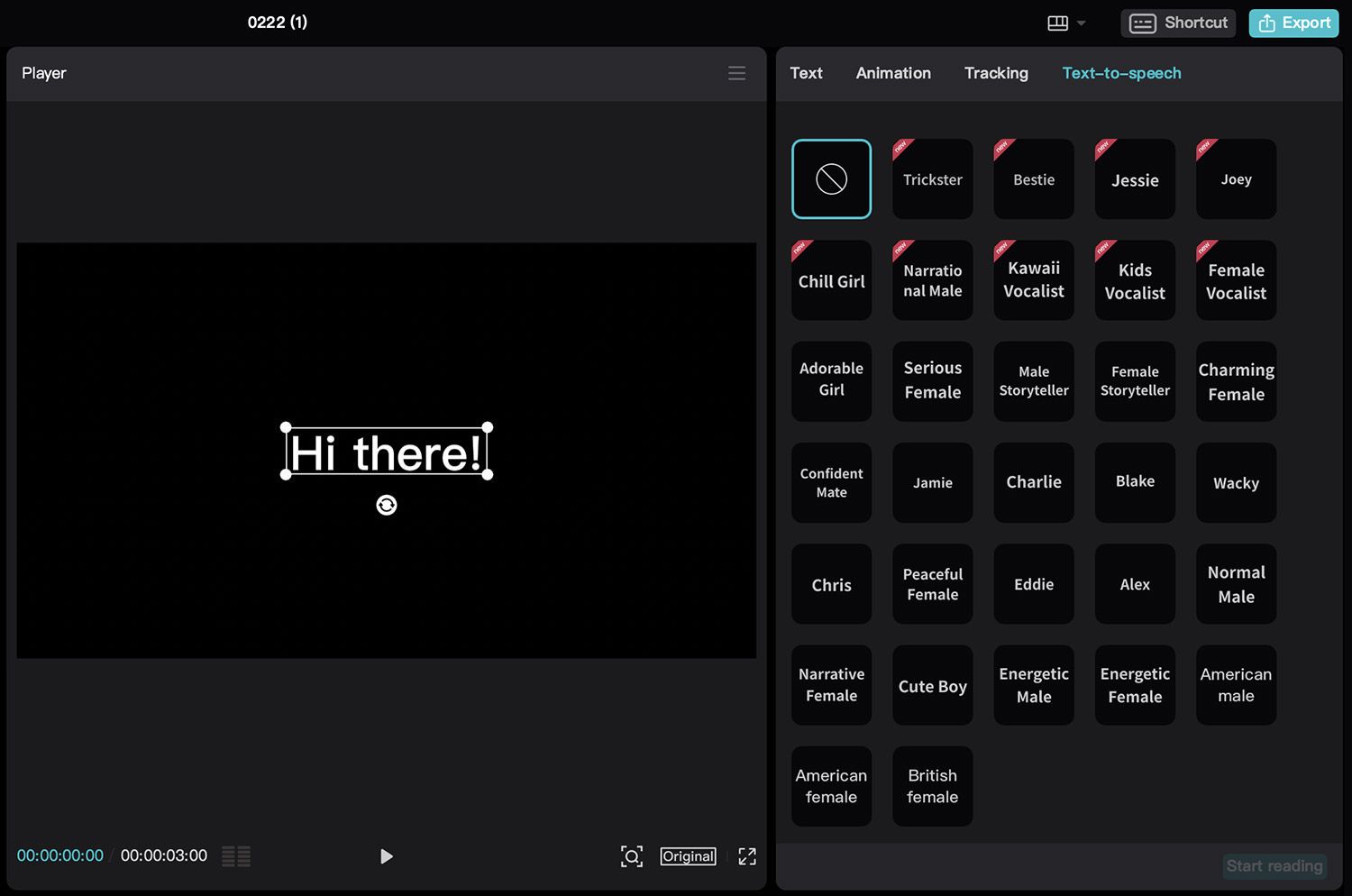Guide to the Best Free Realistic Text-to-Speech Tools of 2024

Selecting the Best Free TTS Tool: A Guide for Developers and Researchers
In the digital age where content accessibility and user engagement are paramount, free text-to-speech (TTS) tools have become increasingly valuable. The best free TTS resources offer a dynamic combination of high-quality voice generation and user-friendly interfaces, making them indispensable for developers and researchers. These tools are not only essential for creating an inclusive environment for those with visual impairments but also for automating the production of audiobooks, video narrations, and other digital media projects. The rise of artificial intelligence (AI) amplifies these offerings, providing voices that are increasingly natural and in some cases, virtually undistinguishable from human speech.
The 2024 landscape of free TTS tools showcases a technological leap forward, where developers and researchers can exploit AI-driven software to read text with impressive realism. Tools now offer a suite of customization options, including tuning voice pitch, speed, and even mimicking celebrity voices, shaping the TTS output to match specific contexts and audience expectations. For the scientifically inclined, the underpinnings of these tools represent intriguing investigations into deep learning models and machine learning applications—all of which contribute to the sophistication of current TTS technology. Selecting the right TTS tool, therefore, becomes a strategic decision aligned with project goals, audience needs, and cost considerations.
| Topics | Discussions |
|---|---|
| Overview of Top Free TTS Tools in 2024 | An informative guide on the leading free text-to-speech tools available in 2024, highlighting key features and functionalities for various user needs. |
| Evaluating Free TTS Apps for Optimal Performance | Critical evaluation of free TTS apps based on ease of use, customization capabilities, and overall performance to help users choose the best solution for their requirements. |
| The Role of TTS in Content Creation | Exploration of the impact of text-to-speech technology in content creation, discussing its utility in accessibility and the creation of digital media like audiobooks. |
| Programming Tutorials for Unreal Speech API | Exhaustive programming tutorials and code examples for integrating the Unreal Speech API, aiding developers in seamlessly adding TTS features to their projects. |
| Optimizing User Experience: Best Practices in TTS Applications | A look into recent advancements and innovations in TTS technology, examining how modern AI and machine learning are revolutionizing the field. |
| Common Questions Re: Free Realistic TTS | Answers to common questions related to free realistic TTS tools, focusing on aspects of realism, AI capabilities, and achieving natural-sounding speech synthesis. |
Overview of Top Free TTS Tools in 2024
As text-to-speech (TTS) technology continues to evolve, it brings forth a lexicon of terms that captures the essence of its capabilities and innovations. These terms are the building blocks that define the functionality, usability, and technical prowess of TTS tools. For professionals looking to utilize TTS software in their projects, understanding this vocabulary is crucial to making informed decisions about which tools are best suited for their specific needs. The glossary below offers a clear understanding of the key terms associated with TTS tools, equipping users with the knowledge to navigate this technologically rich field effectively.
TTS (Text-to-Speech): Technology that converts written text into audible spoken words using synthesized speech, often used in applications such as assistive technologies and media production.
AI (Artificial Intelligence): The simulation of human intelligence processes by machines or computer systems, which in the context of TTS, relates to the generation of natural-sounding speech.
ML (Machine Learning): A subset of AI that equips systems with the ability to autonomously learn and improve from experience without being explicitly programmed.
User Interface (UI): The means by which a user interacts with a computer or software, an important factor in TTS tools for ensuring ease of operation and accessibility.
Voice Customization: The process of modifying TTS output to change characteristics such as pitch, speed, and timbre to create a desired vocal representation.
Deep Learning: An advanced ML technique that utilizes neural networks with multiple layers to process data and patterns for tasks like speech recognition and synthesis.
Natural-sounding Speech: Speech generated by TTS tools that closely mimics the nuanced sound, rhythm, and prosody of human speech for a realistic listening experience.

Evaluating Free TTS Apps for Optimal Performance
A recent article by Dawn Tang, published on January 16, 2024, elucidates the landscape of free TTS tools that are shaping the content creation realm across online and mobile platforms. Highlighted in Tang's guide, these tools are critically appraised for their performance and user experience, bringing essential considerations to the fore for individuals and professionals seeking to utilize TTS. Selecting a TTS tool pivots on various factors such as voice quality, flexibility, and the degree of customization available, including the ability to emulate celebrity voices for a more personalized touch.
The article positions these TTS applications as instrumental resources for people with visual impairments, audiobook production, and other domains requiring accessible audio content. Each tool presents unique advantages and potential drawbacks, echoing the importance of aligning the choice of TTS software with user-specific objectives and preferences. While the technical complexities—such as AI voice generation methodologies and specific speech processing algorithms—are not extensively covered in the summary, these elements are undeniably at the heart of the tools’ capabilities and are critical to the selection process for developers and researchers specialized in auditory technology.
The enumerated TTS applications underscore the evolution of voice synthesis, where the synergy between user interface design and advanced voice generation algorithms results in products that are highly intuitive and efficient. Emphasizing user-centric features, these tools embody the progresses made in deep learning-based speech synthesis, presenting an opportunity for targeted audiences, notably American university research scientists and laboratory software engineers, to engage with TTS technologies that are not only accessible but also sophisticated in their offering of realistic, natural-sounding voices.
The Role of TTS in Content Creation
Text-to-Speech (TTS) technology is revolutionizing content creation by providing a voice for written content across a range of mediums. The pivotal role TTS plays is evident in its ability to make content more accessible, especially in catering to the needs of individuals with visual or reading impairments. The technology's versatility comes to the fore in transforming ebooks into audiobooks, offering an auditory option for consuming literature and enabling multi-tasking for users.
For creators and educators, TTS tools open up new possibilities for interactive learning experiences. By turning textbooks and educational materials into spoken word, they cater to different learning styles and make information consumption more engaging. In digital media production, TTS enriches user experience by providing voiceovers for videos and narration for podcasts, reducing reliance on professional voice actors and democratizing content creation.
A crucial aspect of modern TTS tools is their seamless integration into content workflow, allowing creators to easily convert scripts into natural, convincing voice audio. As these tools continue to advance, incorporating realistic inflections and emotions, they become invaluable assets in creating diverse, inclusive, and engaging content for a global audience.
Programming Tutorials for Unreal Speech API
Integrating AI Voices with Python
Python developers can enhance their applications with the capability of transforming text into realistic speech using the Unreal Speech API. The following programming guide provides a detailed example of how to post text to the API and receive an audio response:
import requests
Replace 'YOUR_API_KEY' with the key you received from Unreal Speech.
Set 'YOUR_TEXT' and 'VOICE_ID' with your chosen text and voice, respectively.
api_key = 'Bearer YOUR_API_KEY'
text_to_speak = 'YOUR_TEXT'
voice_id = 'VOICE_ID'
headers = {'Authorization': api_key}
data = {
'Text': text_to_speak,
'VoiceId': voice_id,
'Bitrate': '192k',
'Speed': '0',
'Pitch': '1',
'Codec': 'libmp3lame' # or 'pcm_mulaw'
}
response = requests.post('https://api.v6.unrealspeech.com/stream', headers=headers, json=data)
if response.ok:
with open('output.mp3', 'wb') as file:
file.write(response.content)
else:
print('Error:', response.text)
Incorporating Text-to-Speech in Java and JavaScript
For developers using JavaScript and Node.js, working with the Unreal Speech API offers a path to add responsive and natural-sounding TTS into web applications or server-side processes. An example code snippet is as follows:
const axios = require('axios');
const headers = {
'Authorization': 'Bearer YOUR_API_KEY',
};
const data = {
'Text': '<YOUR_TEXT>', // Up to 3,000 characters
'VoiceId': '<VOICE_ID>', // Scarlett, Dan, Liv, Will, Amy
'Bitrate': '192k', // 320k, 256k, 192k, ...
'Speed': '0', // -1.0 to 1.0
'Pitch': '1', // 0.5 to 1.5
'TimestampType': 'sentence', // word or sentence
};
axios({
method: 'post',
url: 'https://api.v6.unrealspeech.com/speech',
headers: headers,
data: data,
}).then(function (response) {
console.log(JSON.stringify(response.data));
});
These examples offer developers concise instructions on incorporating the Unreal Speech API into their software solutions, enhancing user interaction with lifelike AI-generated voices.
Optimizing User Experience: Best Practices in TTS Applications
Unreal Speech, with its state-of-the-art text-to-speech (TTS) synthesis API, is redefining cost-efficiency in the realm of realistic speech generation, offering solutions that are drastically more affordable than many of its competitors. For academic researchers, this pricing model facilitates unrestricted access to a technology that can significantly aid in projects requiring natural language processing and auditory data presentations, no longer hindered by financial constraints.
Software engineers and game developers stand to benefit from the TTS API's rapid response and high-quality output, effectively reducing development time and costs without sacrificing performance – essential for creating dynamic user experiences. Educators can utilize this tool to diversify learning materials, catering to students with different needs, including those requiring accommodations for disabilities. Ease of use and comprehensive customization are paramount, with features like per-word timestamps enabling precise synchronization of audio with visual elements.
Unreal Speech's commitment to innovation is apparent in their roadmap for offering multilingual support, addressing the global demand for broader language services. This expansion of scope demonstrates the platform's adaptability, meeting the needs of a diverse user base. Additionally, with planned updates, such as increased language options and commercial utilization without mandatory attribution for paid plans, Unreal Speech is setting the stage to become a pivotal tool in any content creator's workflow.
Common Questions Re: Free Realistic TTS
Discovering the Most Realistic Free TTS Options
The pursuit of finding the most realistic free TTS options draws users to services that offer advanced voice modulation features capable of emulating intonation and emotion to a high degree of accuracy.
Exploring the Capabilities of Free Text-to-Voice AI
Free text-to-voice AI platforms present users with an array of capabilities, from basic text narration to extensive voice customization, catering to a diverse set of requirements for different content development scenarios.
Achieving Realism in Text to Speech: Insights and Tips
To achieve realistic text-to-speech output, it is essential to focus on technologies that provide a combination of high-quality voice samples, precise intonation controls, and the ability to integrate contextual understanding into speech generation processes.